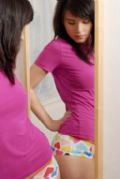|
There’s no disputing the fact that exercise is good for the human body. So it stands to reason that exercise would also benefit the body's largest organ: its skin. But does working up a sweat actually do anything good for your skin—or make you more prone to breakouts? Exercise and Acne: Is There a Connection? While your heart, lungs, muscles and bones arguably gain the most benefit from exercise, the positives of leading an active life aren’t a stranger to your skin. In fact, according to the National Institute of Arthritis and Musculoskeletal and Skin Diseases (NIAMS), exercise increases blood flow to the surface of your skin and brings oxygen and nutrients to your whole body—skin included. Then there's the other benefit of exercise: sweating. Sweat is made mostly of water, with small amounts of ammonia, urea, salts and sugar. When you sweat, these impurities are flushed from your skin. But what does that mean for people who are prone to acne? It might help, but it doesn't necessarily hurt, say the experts at the Children’s Hospital of Colorado (CHC). Sweat in itself neither fights acne nor causes it; but the increased blood flow, unclogging of pores from sweating, and stress reduction that result from exercise may all benefit the acne sufferer, says the CHC. While working out can be beneficial to your overall skin health, you’ll want to avoid doing anything to exacerbate existing skin problems or cause irritation. Avoid wearing clothing that rubs against your skin during exercise, and if you wear a helmet, hat, sunglasses or other protective equipment while you move, clean it often as these sweaty surfaces can collect dirt and oil that can be transferred to your skin. Exercising or not, you should always avoid touching your face to prevent blemishes and clogged pores. Be especially aware of this when you’re working out. Touching your face can transfer oil and bacteria (which thrive in moist, humid environments like the gym) to the skin, leading to possible acne flare-ups. If you need to wipe excess sweat, blot your skin with a clean, dry towel and avoid rubbing or wiping the skin with your hands, shirt or towel. For those with longer hair, wearing hair back and keeping your hair or bangs off of your face can prevent additional dirt and oil from clogging your pores. Plus, a ponytail can keep you from touching your face and hairline if your hair frequently gets in the way. When it comes to makeup, most makeup on the market is noncomedogenic—so it shouldn’t clog pores even if you wear it while working out. Keep in mind, too, that over-washing your face can lead to irritation, so a pre- and post-workout wash may be too much for your skin. Your best bet may be to go to the gym sans makeup and wait until after your workout to apply it. Get more post-workout beauty tips. Other Dermatological Drawbacks While it seems odd to point out the negative aspects of exercise, there are a few issues to be aware of when it comes to skin health. These drawbacks don’t outweigh the many benefits of exercise, but knowing the potential for problems will help you avoid them. The biggest drawback, particularly for athletes and gym-goers, is the possibility of contracting a skin condition. Outbreaks of ringworm, herpes, and methicillin-resistant Staphylococcus aureus (MRSA) are highly contagious among both athletes and average exercisers, according to the American Academy of Dermatology. Physical contact, shared facilities and equipment, and poor hygiene all contribute to the incidence of MRSA. Athletes and exercisers should also watch out for ringworm and athlete’s foot, two fungal infections that are easily spread by close contact. The AAD advises that after working out or competing, athletes should shower immediately and make sure they wear flip-flops not only in the shower, but also when walking around in the locker room. This advice holds true for casual exercisers using communal locker rooms and showers at health clubs, too. In addition to these conditions, working out can negatively affect those with chronic skin conditions as well. For people who have rosacea—a skin condition characterized by flare-ups of flushing and persistent redness, bumps and pimples—any activity that causes flushing or overheating of the face can spark a rosacea flare-up, according to the National Rosacea Society. Managing your workout can reduce the incidence of flare-ups, and the NRS recommends working out during the cooler parts of the day, working out in more frequent but shorter intervals and drinking cold fluids. Lower-intensity exercises and water exercise may also help. The positive effects of exercise far outweigh the negatives, so check out these tips to keep your skin at its best when fitness is part of your lifestyle. 7 Skincare Tips for Exercisers
Even though some experts aren’t sure whether exercise helps specific conditions like acne, most do agree that working up a sweat will benefit the skin as a whole. So what are you waiting for? Go get that healthy glow the best way possible—by getting your sweat on! Sources National Institute of Arthritis and Musculoskeletal and Skin Diseases (NIAMS). "Healthy Skin Matters," accessed September 2011. www.niams.nih.gov. Children’s Hospital Colorado. "Can Exercising Improve My Acne?," accessed September 2011. www.childrenscolorado.org. National Rosacea Society. "Will Exercise Cause My Rosacea to Flare Up?," accessed September 2011. www.rosacea.org. American Academy of Dermatology. "Athletes Prone to Rash of Skin Conditions," and "Sunscreens," accessed September, 2011. www.aad.org. U.S. Department of Health and Human Services Office on Women’s Health. "Acne Fact Sheet," accessed September 2011. www.womenshealth.gov. Nemours Center for Children's Health Media. "Tips for Taking Care of Your Skin," and "What's Sweat?," accessed September 2011. www.kidshealth.org. American Academy of Dermatology, "7 Acne Skincare Taboos," accessed September 2011. www.skincarephysicians.com. |







